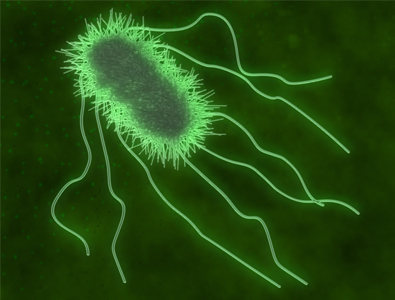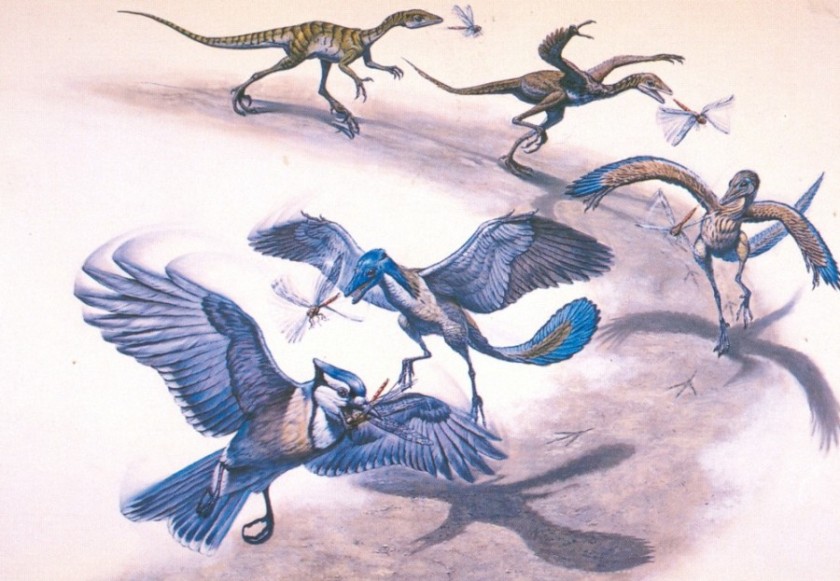
Lenski’s 15 year (E-coli generation = 31,500) E-coli experiment (along with nylonase) is perhaps one of the most famous argument used by evolutionists as an illustration of evolution creating irreducible-like systems or novelty in action. The Long Term Evolutionary Experiment (i.e. LTEE) involved a certain group of bacteria known as E-coli that were isolated under aerobic conditions and eventually had the new evolved the ability to metabolize citrate. Lenski’s E-coli experiment is a well known tactic used by evolutionists to refute creation/intelligent design arguments by implying evolution is capable of creating novel biological proteins for cellular functions that did not otherwise exist before. Is this position reasonable? A cross-examination between the arguments used by evolutionists and actual peer-reviewed literature revealed no based on numerous points:
Point # 1: Despite the evolutionary claim of E-coli’s ability to metabolize citrate as new genetic material, it is not at all completely new.
On first sight, it may seem that Lenski’s E-coli experiment does indeed seem to show evolution in action, considering the fact that E-coli orginally lacked the ability to utilize citrate. However, this is not at all completely true. Contrary to popular belief, the ability for E-coli to metabolize citrate is really nothing special.
As demonstrated in a July 1982 peer-reviewed paper published in the Journal of Bacteriology by Barry G. Hall:
“Chromosomal Mutation for Citrate Utilization by Escherichia coli K-12,”
“E. coli is not, however, totally inert toward citrate. It may utilize citrate anaerobically provided that a second substrate such as glucose or lactate is available to provide reducing power for the formation of succinate from oxaloacetate (13). The failure of E. coli to utilize citrate aerobically has been attributed to the absence of a citrate transport system (10), but the co-metabolism of citrate implies that E. coli does possess a citrate transport system that functions anaerobically (13).”- Barry G. Hall
Based on the paper, it seems that E-coli did indeed actually already had the ability to metabolize cirate in the first place although it was restricted. Originally, they are limited to utilizing citrate only under anaerobic conditions, meaning they were only capable of doing so under an environment that is absent of oxygen. So here’s a question to consider. Is citrate really something that is completely new? The true answer is no, as E-coli already possessed the genetic information to utilize citrate although restricted to the level where oxygen is absent.
Point # 2: E-coli’s ability to utilize citrate under oxic conditions is actually nothing more but a modification of an already existing system rather than a novel one.
By contrast, Lenski’s E-coli experiment involved isolation of the bacterial population with citrate under aeorboic conditions, i.e. environments with oxygen present. Due to the limitation stated above, they were unable to metabolize citrate. However, as Barry Hall has explained in his 1982 paper:
“(13). The failure of E. coli to utilize citrate aerobically has been attributed to the absence of a citrate transport system (10), but the co-metabolism of citrate implies that E. coli does possess a citrate transport system that functions anaerobically (13).”
To rephrase, the reason why E-coli lacked the ability to utilize citrate was due to the fact of E-coli lacking a ‘citrate transport system’ that although functional under the absence of oxygen, is non-functional under such conditions. Even Lenski himself has suggested this in his paper, “Historical contingency and the evolution of a key innovation in an experimental population of Escherichia coli,”
“A more likely possibility, in our view, is that an existing transporter has been coopted for citrate transport under oxic conditions. This transporter may previously have transported citrate under anoxic conditions (43) or, alternatively, it may have transported another substrate in the presence of oxygen. The evolved changes might involve gene regulation, protein structure, or both (61).” – Lenski
How did the citrare metabolism under aerobic conditions came about?
According to Barry G Hall in his 1982 paper, the ability for E-coli to metabolize citrate under oxygenated conditions was due to “genetic recombination” (the shuffling of pre-existing genetic information) that involved the activation of the so-called cryptic genes.
“The mutational activation of these genes suggests that they should be considered cryptic genes which have persisted in a silenced state since E. coli diverged from its Cit+ ancestor. That suggestion is supported by the observation that the kinetic parameters for citrate uptake in strain D2004 are of the same order as those for succinate uptake in E. coli (Km = 14 ,uM succi- nate; Vm,, = 20 ,umolImin per g [dry weight]) (11). It is unlikely that mutations conferring a specificity for citrate upon some already existing transport system would result in such a low Km for citrate. More detailed comparisons between the citrate transport system of strain D2004, the citrate transport systems specified by Cit+ plasmids in E. coli, and citrate transport systems of such citrate-utilizing organisms as Salmonella and Klebsiella should shed some light on the possibility that the citrate genes are cryptic in wild-type E. coli”
Cryptic genes are silently phenotypic genes not normally expressed in the normal life cycle of organisms. They are silent genes and unexpressed, though giving the name cryptic. Interestingly though, cryptic genes are remotely activated and involved in helping organisms adapt to their environment whenever exposed to extreme environmental stress stimuli or selective pressure. They are activated by the cell rearranging its genome such as transposable genetic elements (genes that can copy-paste or cut-paste from one genome position to another or chromosome) Cryptic activation is believed to be a non-random and intelligent targeted response though this remains controversial.
It seems that E-coli rather obtained the ability to metabolize citrate via not by gene duplication but the mere activation of pre-existing cryptic genes. Despite what evolutionists claim that gene duplication created new genetic information of citrate in E-coli, it did not. Rather gene duplication was found to be more of an “amplifier” that helped them to metabolize citrate more effectively than they would without it. However, the modified pre-existing gene that gave them the capacity to utilize citrate under oxygen substrates had already existed long before gene duplication even took place.
How does this demonstrate that evolution is capable of creating brand new biological systems? Truth is it doesn’t. As Hall has stated in his paper, the ability for E-coli to metabolize citrate was derived from an already existing complex biological system expressed from the activation of ‘cryptic genes.’ Rather than demonstrating the evolutionary origin of where biological systems actually come from, it only demonstrated a mere modification of an already existing system that adapted itself to function in oxygen conditions. Yet, no new component, no new novelty was actually generated in the evolution of citrate.
Point # 3: E-coli’s ability to use citrate is not new genetic information, not according to creationists but also to the 2016 peer-reviewed paper:
After doing a literature review, I came across an interesting 2016 peer-reviewed science paper entitled, “Rapid Evolution of Citrate Utilization by Escherichia coli by Direct Selection Requires citT and dctA,”
This paper, rather than supporting the neo-Darwinian synthesis of evolution, criticized the common evolutionary claim of Lenski’s experiment being great evidence for new genetic information. Despite such criticism over the evolutionary claim of new genetic information, somehow it managed to pass peer-review. As the researchers in the paper quote:
“We conclude that the rarity of the LTEE mutant was an artifact of the experimental conditions and not a unique evolutionary event. No new genetic information (novel gene function) evolved.”
No new genetic information? Well, there you have it folks. No new genetic information was actually generated in Lensi’s E-coli experiment.
Despite the fact that it took Lenski 15 years of experimentation for E-coli to metabolize citrate under aerobic conditions (i.e. 31,500 generations), the previously quoted study “Rapid Evolution of Citrate Utilization by Escherichia coli by Direct Selection Requires citT and dctA,” found E-coli already doing so in 12 to less than 100 generations.
and yet, contrary to the 2016 paper, the opposite was rather demonstrated:
“Importantly, potentiated and actualized E. coli Cit-strains were obtained in as few as 12 generations and refined phenotypes in fewer than 100 generations. Phenotypic and geneticanalyses of these E. coli Cit-strains provided insight into the mechanism for the adaptations and suggested why the LTEE took 33,000 generations to reach this phenotype. Also, this study provided a unique opportunity to compare the results of a direct selection with those of a long-term genetic screen. Finally, because this adaptation did not generate any new genetic information and required expanded expression of only two existing transporters (citT and dctA), generation of E. coli Cit-phenotypes in our estimation does not warrant consideration as a speciation event”
With just 12 to less than 100 generations, E-coli already had the ability to metabolize citrate under aerobic conditions. 12 to less than 100 is nothing compared to Lenksi’s 31,500 exact generations.
Also there was no significant difference between the E-coli in the 2016 paper to that of Lenski’s LTEE (Long Term Evolutionary Experiment) as they both had the same genetic material, making it a justifiable comparison. What was the reason why Lenski’s E-coli took more than 30,000 generations to develop citrate metabolism but only 12 to 100 in the 2016 paper? The reason was the difference in selection. The selection used in the 2016 paper was directive, as the E-coli were forced to try to metabolize citrate. Due to the extreme conditions, a certain population of E-coli was able to metabolize citrate quite rapidly in very few generations.
On the other hand, Lenski’s LTEE was not directive, as the E-coli were not forced only to citrate conditions. Rather the E-coli in Lenski’s experiment was free of selection, as they were exposed to other resources to obtain energy.
but regardless, they were clearly criticizing Lenski’s finding:
In summary, E. coli can rapidly mutate to a Cit-phenotype in
a relatively short time if subjected to direct selection. This indi-
cates that the 33,000 generations to potentiate the evolutionary
resources for the Cit-phenotype do not reflect a direct requirement but merely experimental conditions. As such, Cit-mutants exemplify the adaptation capability of microorganisms but, as ofyet, the LTEE has not substantiated evolution in the broader senseby generation of new genetic information, i.e., a gene with a newfunction. Interestingly, our findings parallel the conclusions from bacterial starvation studies by Zinser and Kolter (44) in which E.coli adaptations were dominated by changes in the regulation ofpreexisting gene activities rather than by the generation of new gene activities, de novo. The LTEE isolation of Cit+ mutants has become a textbook example of the power of long-term evolution to generate new species. But, based on our results, E. coli arrives at the same solution to access citrate in days versus years, as originally shown by Hall (14). In either case, genes involved in the process maintain their same function but show expanded expression by deregulation. Because of this, we argue that this is not speciation any more than is the case with any other regulatory mutant of E. coli. A more accurate, albeit controversial, interpretation of the LTEE is that E. coli‘s capacity to evolve is more limited than currently assumed.
There you have it, no new genetic information was actually generated in the evolution of E-coli’s ability to metabolize citrate.

